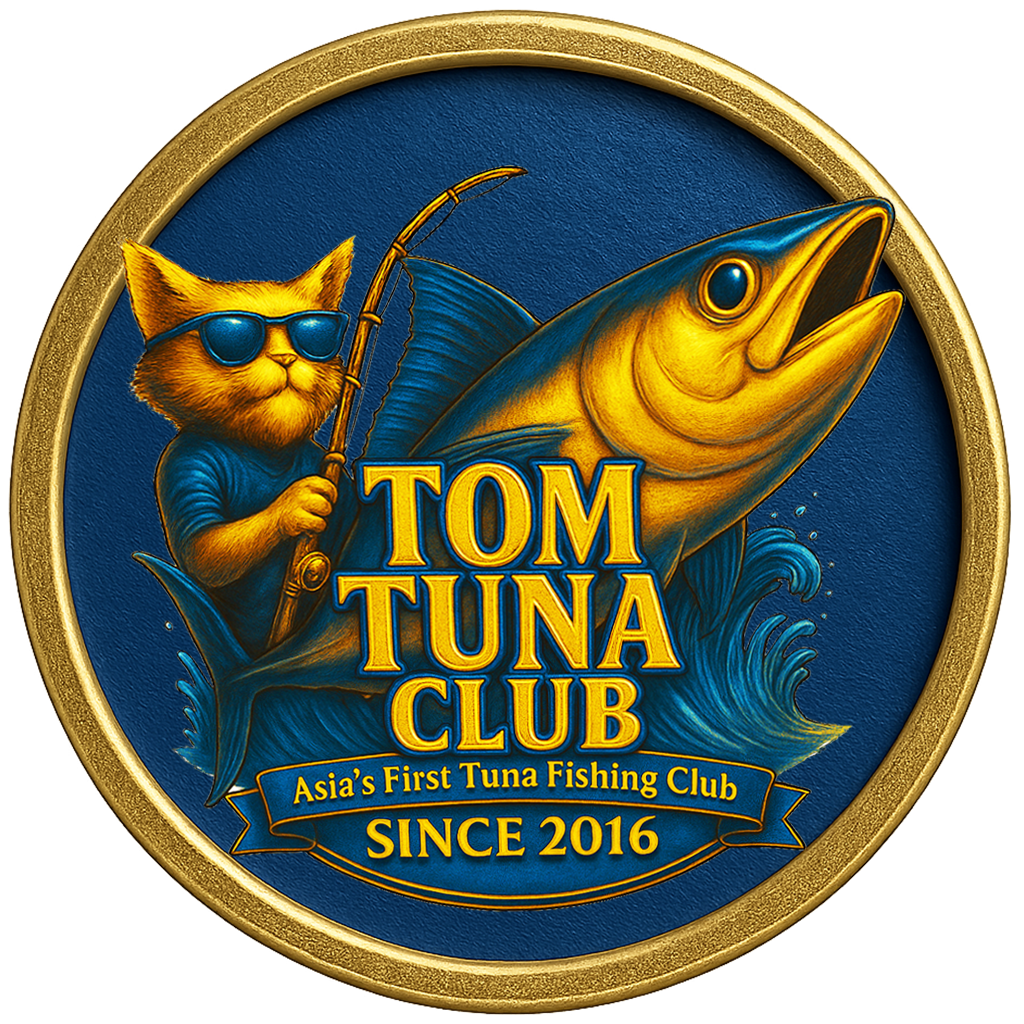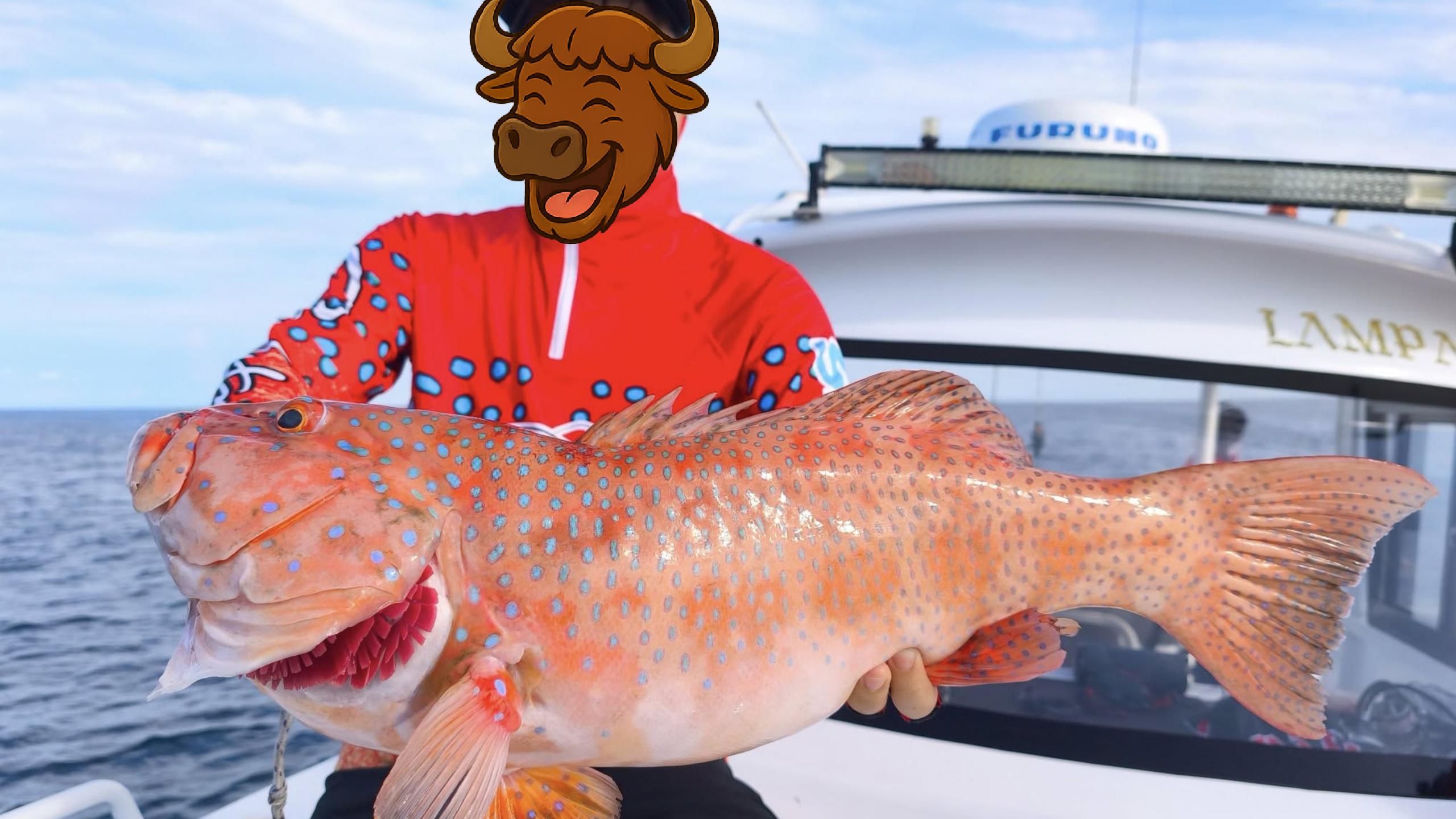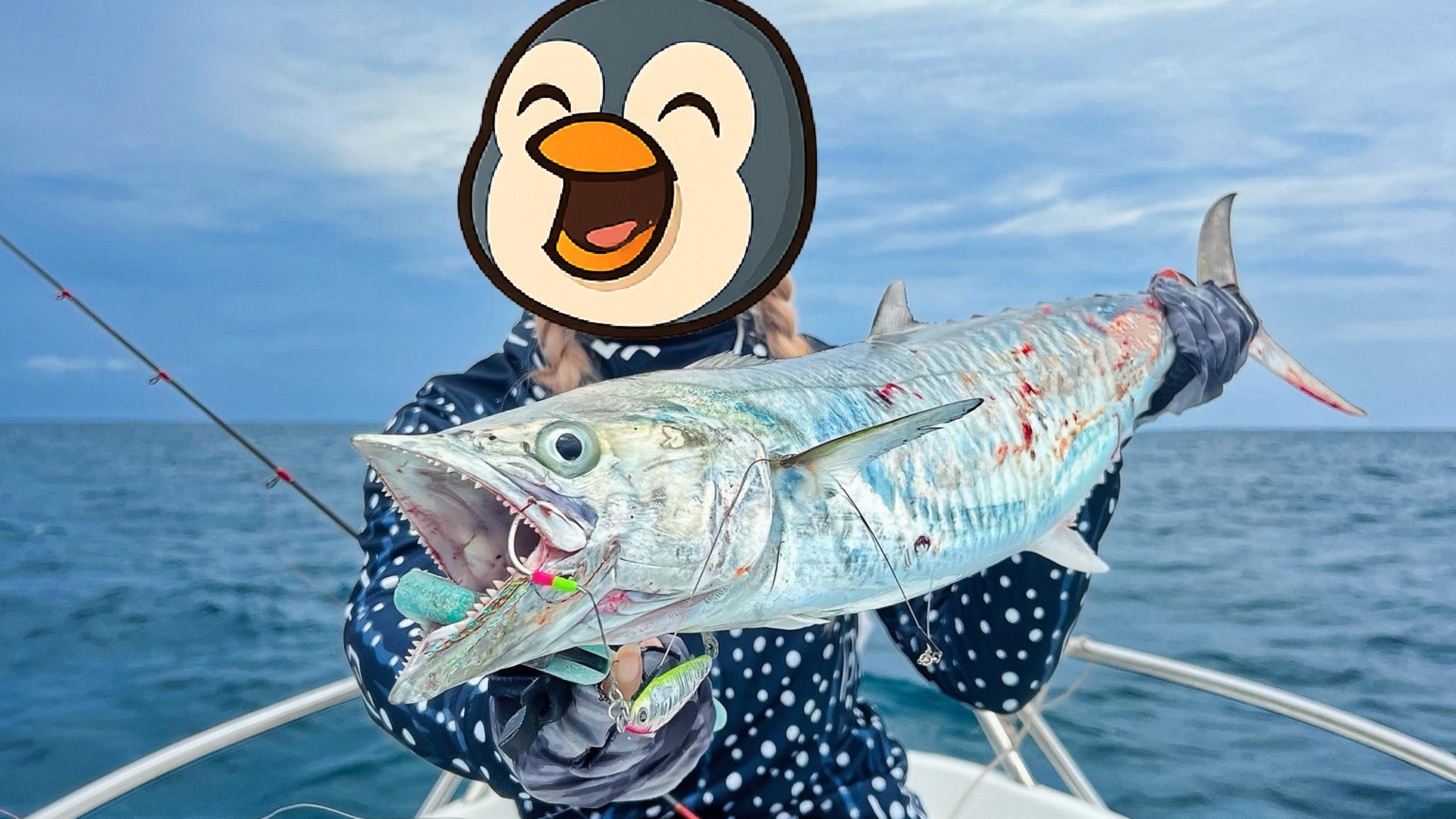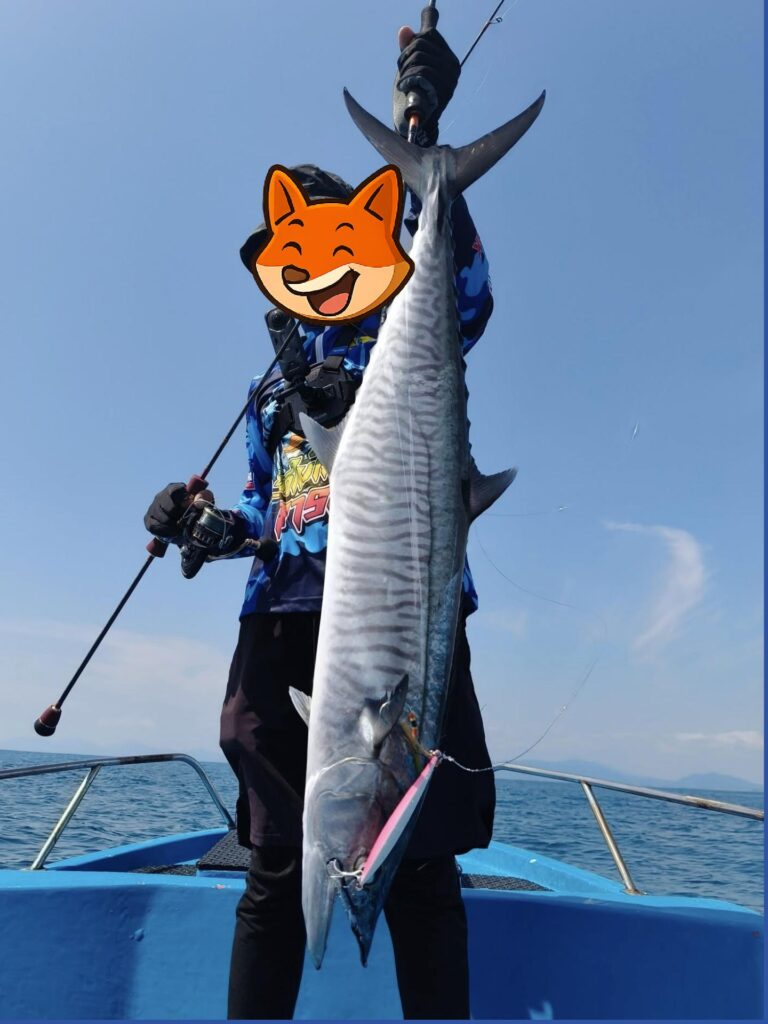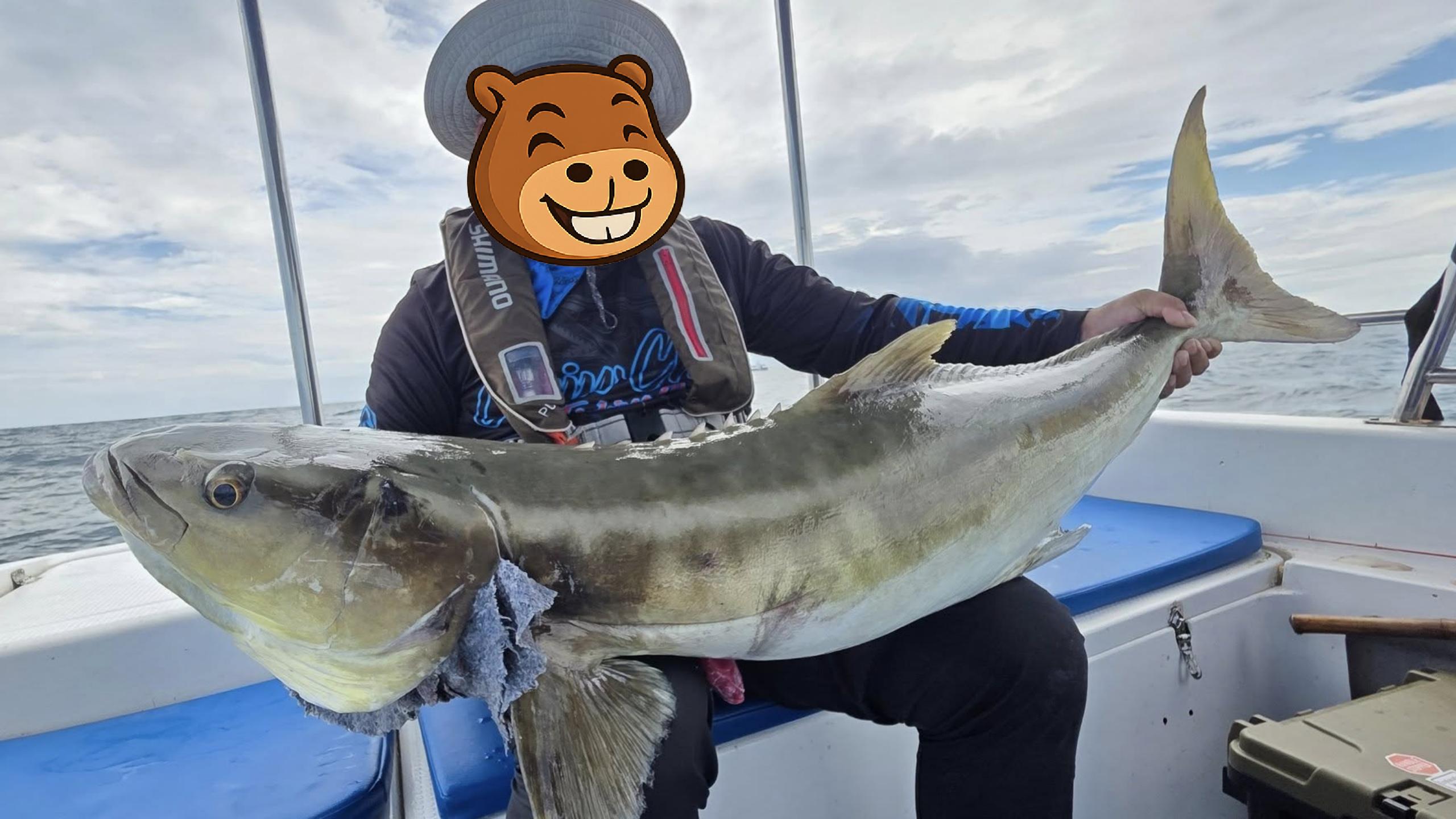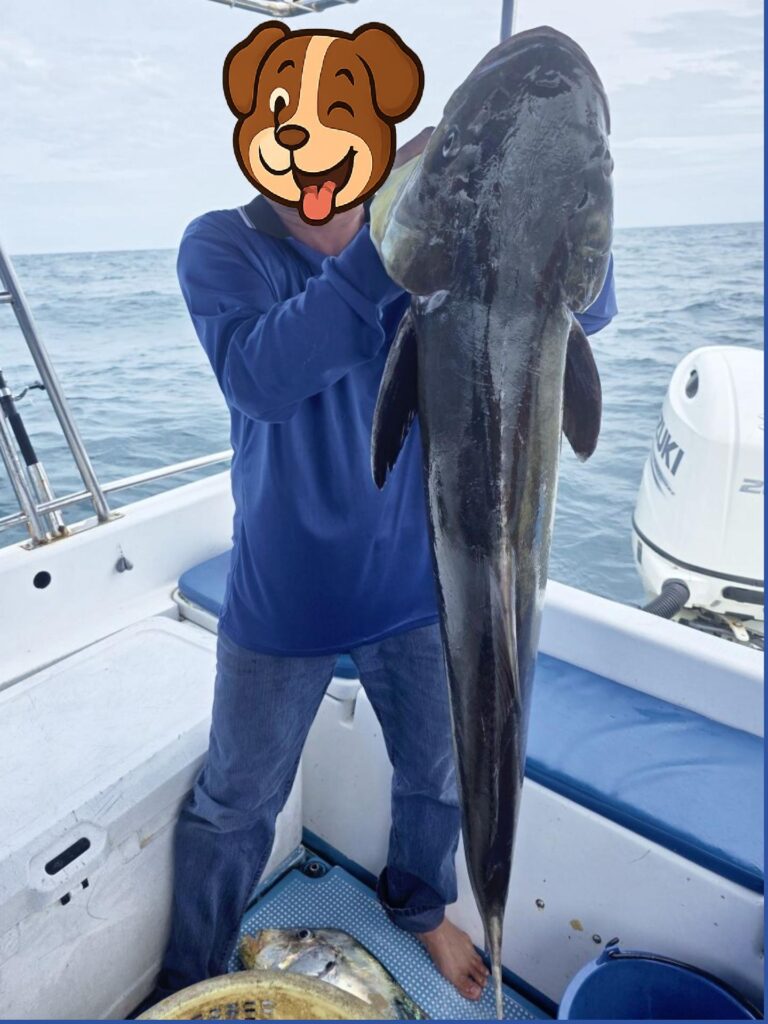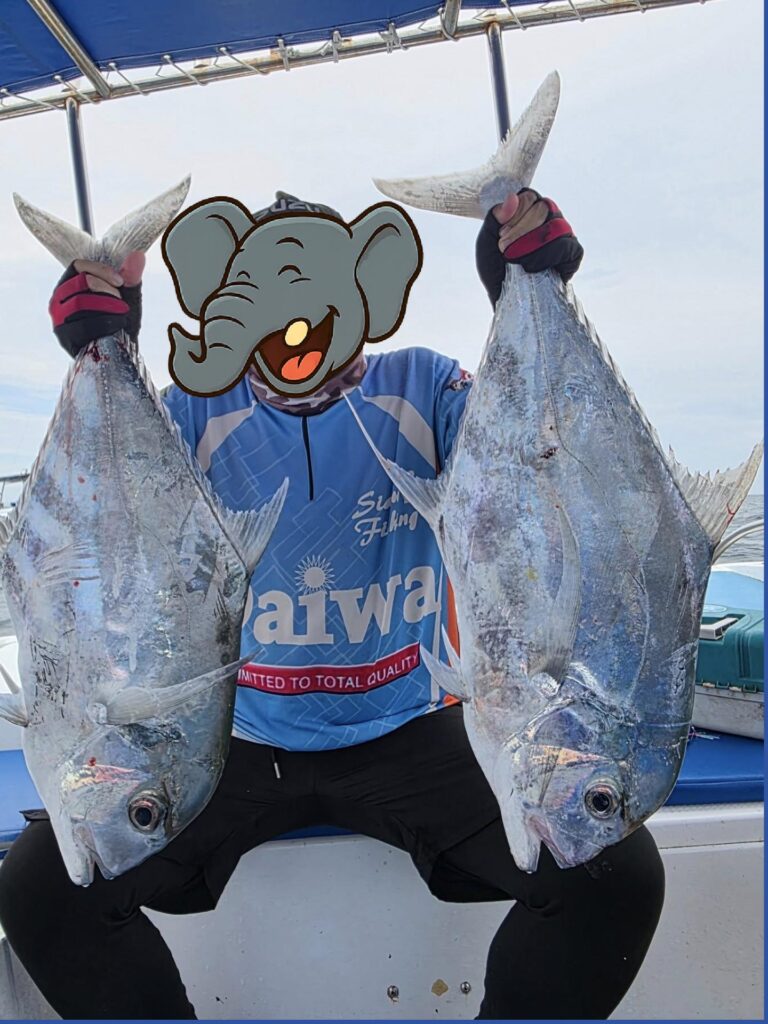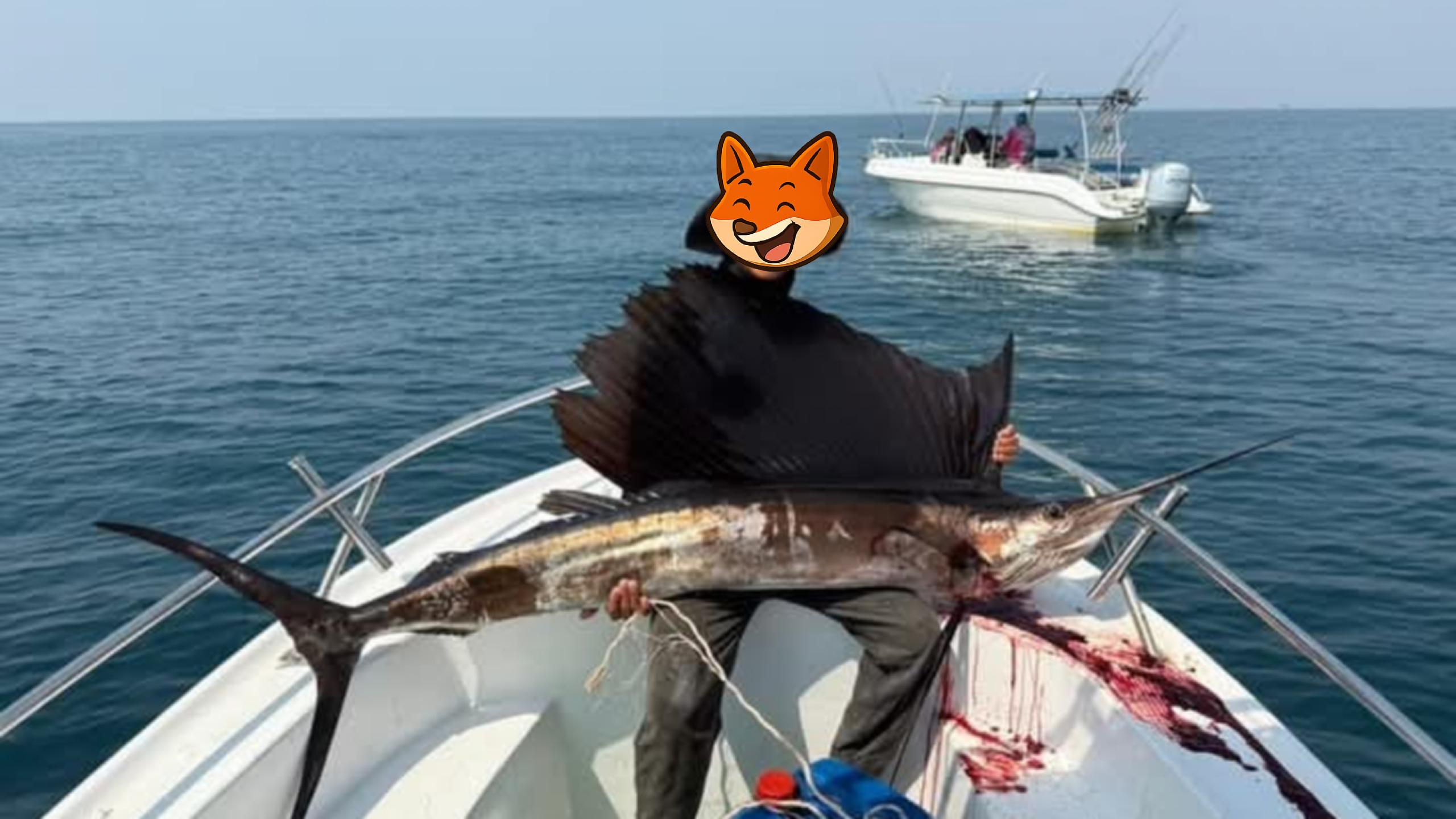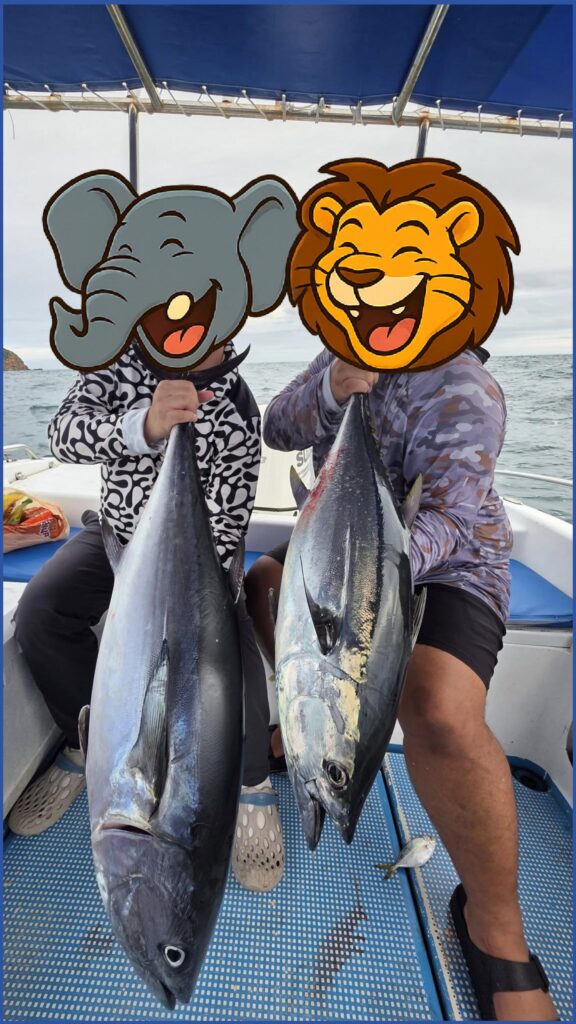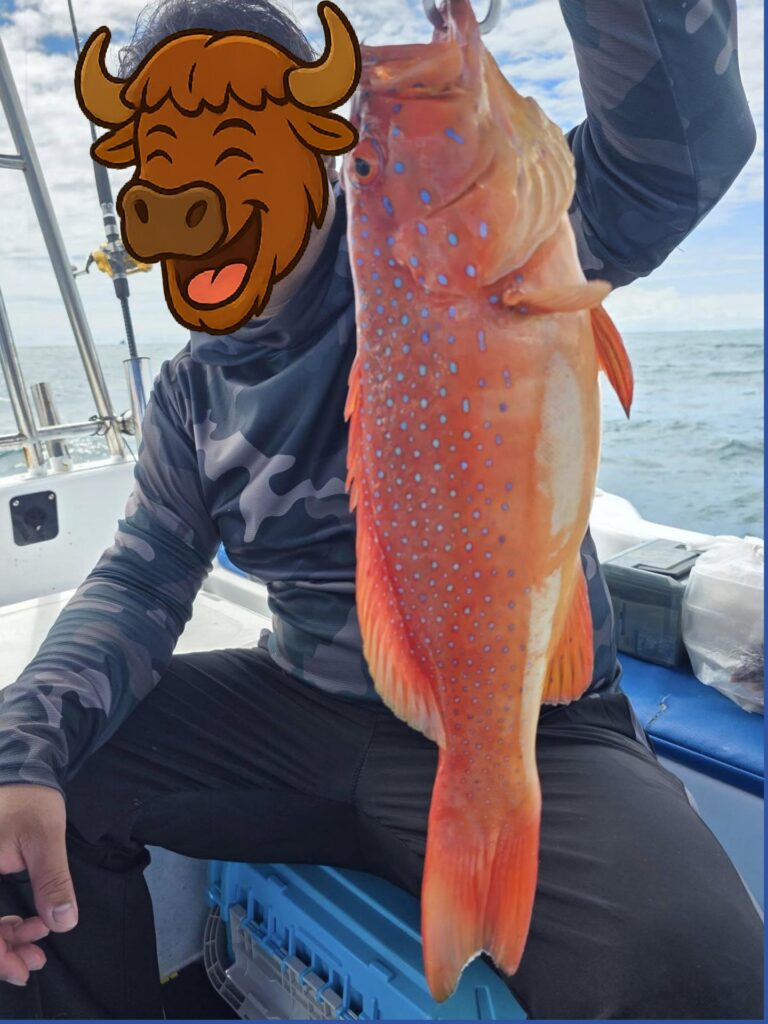
Coral Trout – The Taste of the Reef
Few fish represent the beauty and flavor of tropical reefs like the Coral Trout, also known as Pla See Dang or East Star Grouper. Its bright red body dotted with sapphire-blue spots makes it one of the most stunning fish in Crystal Bay — and one of the most prized.
Coral trout usually inhabit depths of 20–60 meters, hiding among coral ledges and rocky outcrops. They ambush passing baitfish with lightning speed, striking hard and retreating to cover. While most range between 3–8 kg, larger specimens over 10 kg occasionally surprise anglers near deeper reefs.
Because they dwell close to the reef, quick reflexes are key. Once hooked, you must pull firmly to prevent them from diving back into the rocks. A few seconds’ delay, and the line will likely snap against the coral.
Beyond their beauty and challenge, coral trout are famous for their culinary value. Their white, tender meat and mild sweetness make them a premium choice for sashimi or steamed Thai-style dishes. Local restaurants often showcase them as “the jewel of the Gulf.”
Catching a coral trout in Crystal Bay isn’t just luck — it’s a reward for skill, timing, and precision. Their presence also signals healthy coral habitats, rich in life and color.
In short, the coral trout is more than a fish — it’s a symbol of the reef itself: vibrant, delicate, and deeply rewarding.
